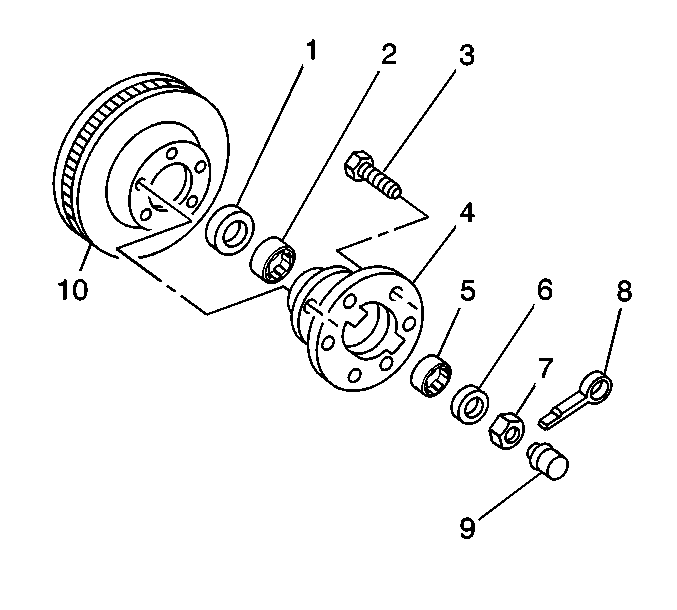- Raise the vehicle. Support the vehicle with suitable safety stands.
- Remove the retainer cap (9).
- Remove the cotter pin (8).
- Back off the nut one flat.
- Measure the endplay in the hub/rotor. This measurement should be between 0.013-0.20 mm (0.0005-0.008 in) when properly adjusted.
- Install the retainer cap.
- Lower the vehicle.
Notice: Never preload the front wheel bearings. Damage can result by the steady load on the roller ends that comes from preloading.
Important:
• In order to maintain the continuous, smooth functioning of the
front suspension, the front wheel bearings must be correctly adjusted. • The bearings must be a slip fit on the spindle and the wheel bearings
must be lubricated in order to ensure that the roller bearings will roll and
not skid. • The spindle nut must have a free-running fit on the spindle threads.

Notice: Use the correct fastener in the correct location. Replacement fasteners must be the correct part number for that application. Fasteners requiring replacement or fasteners requiring the use of thread locking compound or sealant are identified in the service procedure. Do not use paints, lubricants, or corrosion inhibitors on fasteners or fastener joint surfaces unless specified. These coatings affect fastener torque and joint clamping force and may damage the fastener. Use the correct tightening sequence and specifications when installing fasteners in order to avoid damage to parts and systems.
Tighten
Tighten the nut (7) to 16 N·m (12 lb ft),
while rotating the wheel and tire assembly, or the hub/rotor. This will seat
the bearings.
| • | If the hole in the spindle lines up with the slot in the nut, insert the cotter pin. |
| • | If these do not line up, back off the nut until the hole and the slot line up. Do not back off the nut more than one additional flat. |
